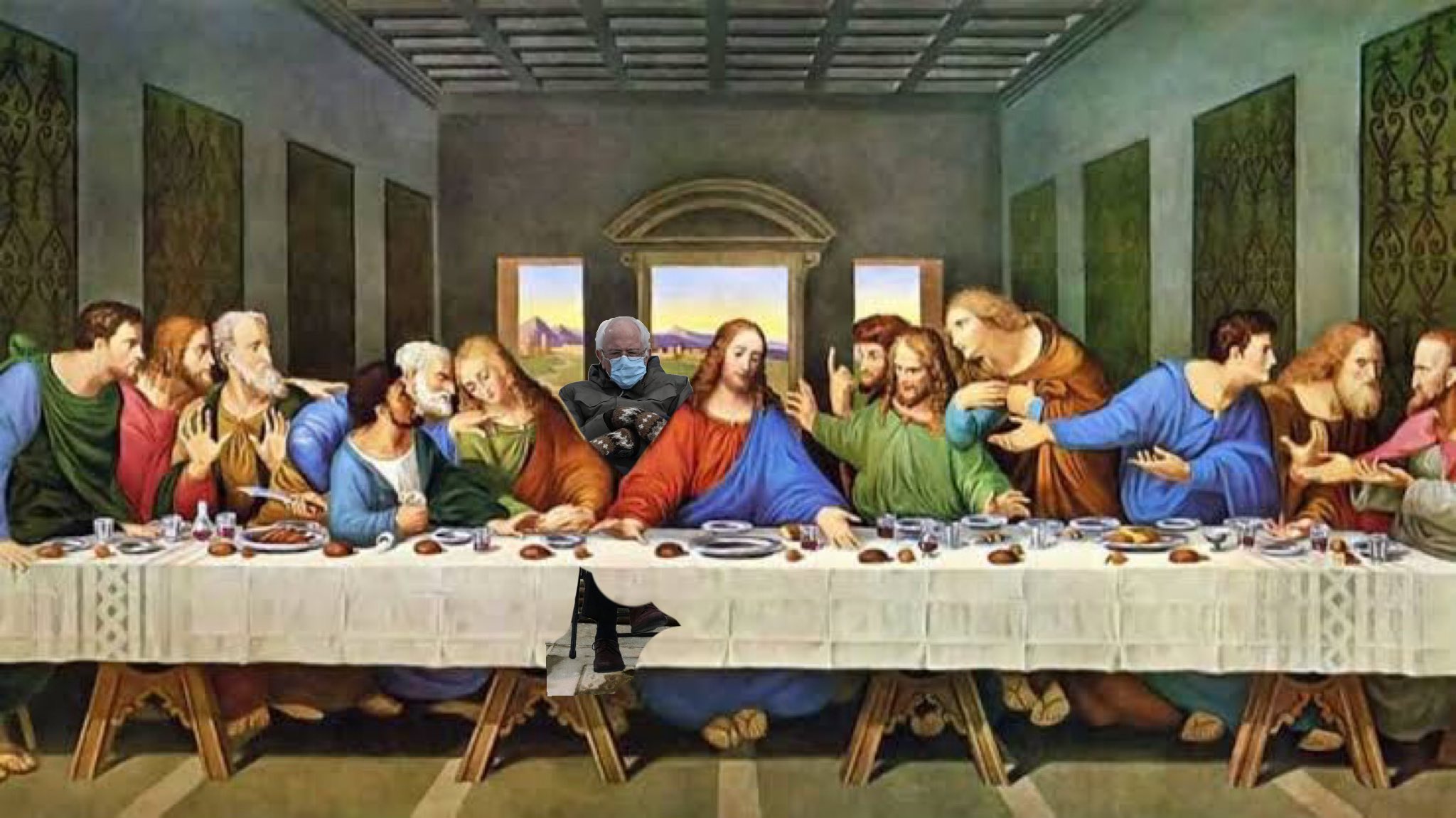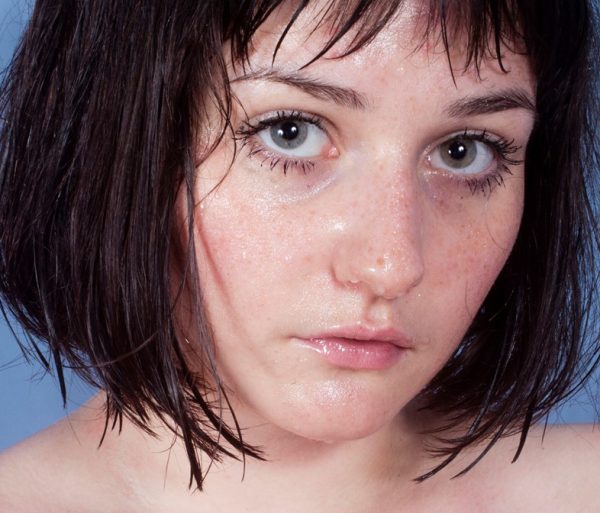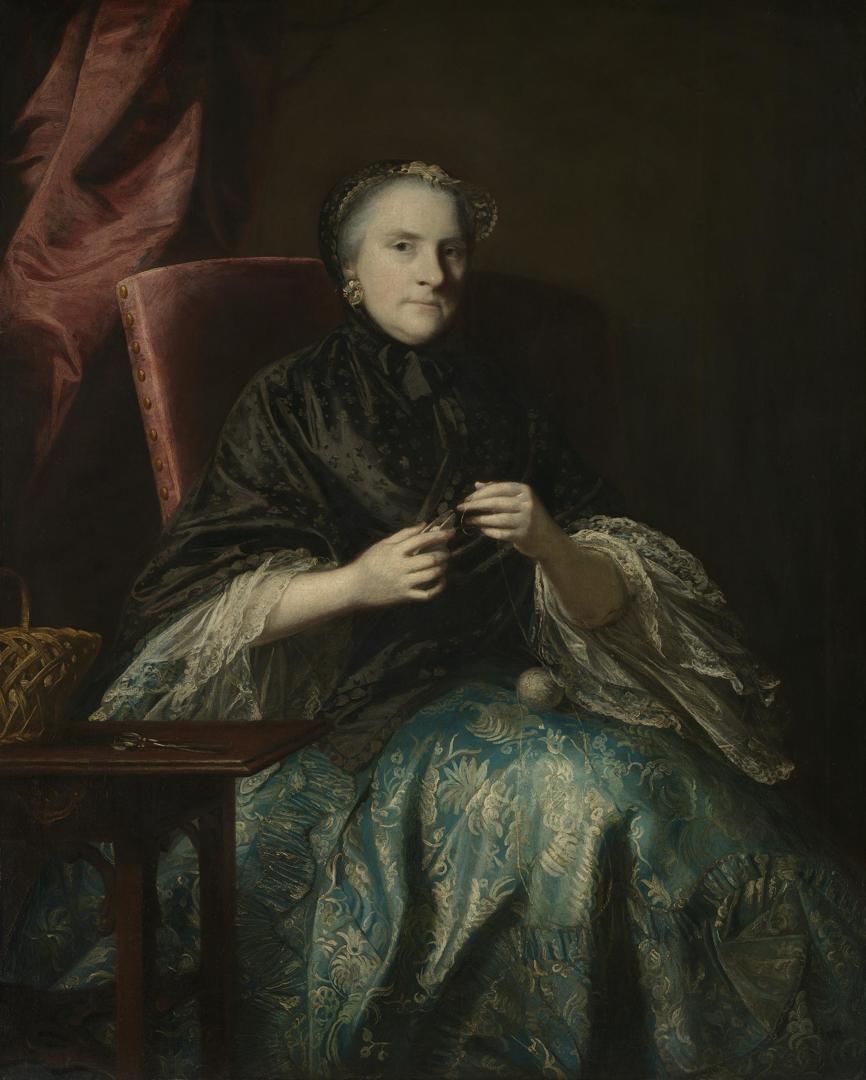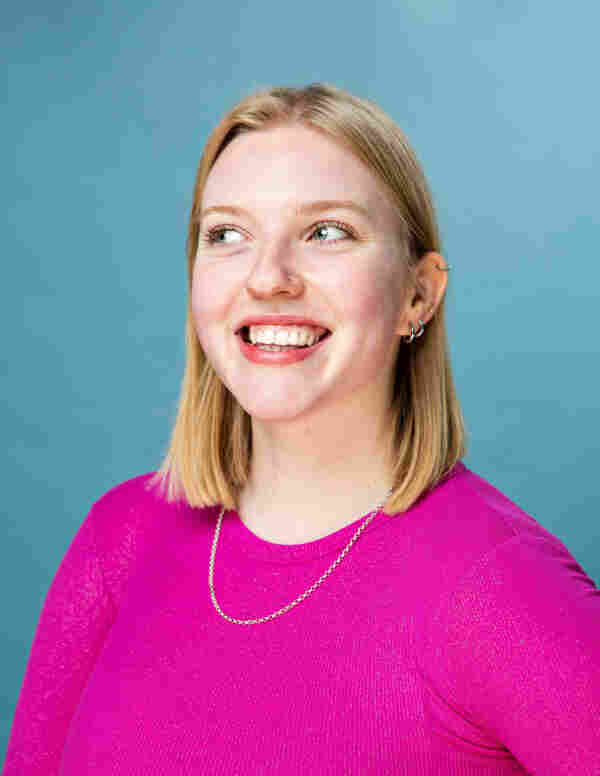Read Time 23 minutes
The real cost of working in the arts [if you’re not a nepo-baby]
‘Go for broke!’ says the trust-funder who will never know the meaning of the word. But how are the non-millionaires making it in an art world facing increasing neglect from the UK government? The answer is: with great difficulty.
Britain has long held a reputation as a champion of creativity and innovation, a country that nurtures the arts in all its forms. However, recent government interventions have cast a shadow of doubt over this, and the UK’s existence as a creative hub is now at risk. The visual arts sector in England, in particular, finds itself battling to survive amid an onslaught of endless obstacles.
But is it even trying? The impact of the COVID-19 pandemic, subsequent government funding realignment and evolving socio-economic dynamics have played their part in reshaping the artistic landscape – and not for the better. Why is it that support is given to some industries, such as science and tech, but not others? This structural problem could be countered by systemic change, could, if only those in positions of power took time to think through policies that have an impact on creatives, and society at large.
Phoebe Minson, artist, curator and head of communications at Conart Global has a degree in fine art [painting] from globally renowned educational establishment Central Saint Martins, where the cream of the crop go to study. She’s spent the last seven years facilitating people’s understanding and engagement with the arts so that young artists can go on to pursue sustainable creative careers, and she’s ready for change. ‘Most of our societal structures don’t allow for the artist’s schedule, the artist’s experimentation, or the artist’s self-expression,’ says Minson. ‘While the 9-5 world has maternity/paternity leave and holiday pay, the domain of creatives remains largely unsupported.’
![The real cost of working in the arts [if you're not a nepo-baby] 9 Robbie Spotswood | The real cost of working in the arts [if you're not a nepo-baby] | Darklight Digital](https://darklight-digital.com/media/2023/08/2-1-5x5.jpg)
Britain has long held a reputation as a champion of creativity and innovation, a country that nurtures the arts in all its forms. However, recent government interventions have cast a shadow of doubt over this, and the UK’s existence as a creative hub is now at risk. The visual arts sector in England, in particular, finds itself battling to survive amid an onslaught of endless obstacles.
But is it even trying? The impact of the COVID-19 pandemic, subsequent government funding realignment and evolving socio-economic dynamics have played their part in reshaping the artistic landscape – and not for the better. Why is it that support is given to some industries, such as science and tech, but not others? This structural problem could be countered by systemic change, could, if only those in positions of power took time to think through policies that have an impact on creatives, and society at large.
Phoebe Minson, artist, curator and head of communications at Conart Global has a degree in fine art [painting] from globally renowned educational establishment Central Saint Martins, where the cream of the crop go to study. She’s spent the last seven years facilitating people’s understanding and engagement with the arts so that young artists can go on to pursue sustainable creative careers, and she’s ready for change. ‘Most of our societal structures don’t allow for the artist’s schedule, the artist’s experimentation, or the artist’s self-expression,’ says Minson. ‘While the 9-5 world has maternity/paternity leave and holiday pay, the domain of creatives remains largely unsupported.’
In the early stages of the Covid-19 pandemic, things got real messy, real fast. The arts and photography sector wasn’t immune to the restrictions placed on more *traditional* workplaces, and chaos followed soon after. The UK government sprung into action by creating the £1.6 billion Culture Recovery Fund, which just about prevented a catastrophic collapse of the art sector – just. This temporary and feeble attempt at a lifeline provided little reprieve for cultural institutions and artists that have been kicked to the curb and sidelined.
‘We need to recognise the importance of the arts, the inaccessibility of art, and the intentional minimising of something that should be widely available to everyone,’ adds Minson. But just as the arts sector was beginning to get the financial support it needed, however insincere the gesture was, and just as the value of the arts was giving people a little bit of reprieve when the world around them was a little crazy, things took a turn for the worse.
The road to arts recovery has been far from plain sailing as a reconfiguration in Arts Council England [ACE] funding will see a projected £50 million reduction in support for London’s arts institutions over the next three years, with the money being redirected to organisations outside of the capital. It’s one step forward, ten confusing steps back. If it seems like they don’t care about the arts, it’s because they don’t. What they care about is what makes them money and contributes to the economy, which devalues and dehumanises artistic modes of self-expression that have the ability to connect with people in a way words can’t express and numbers can’t quantify.
![The real cost of working in the arts [if you're not a nepo-baby] 10 Robbie Spotswood | The real cost of working in the arts [if you're not a nepo-baby] | Darklight Digital](https://darklight-digital.com/media/2023/08/4-1-5x5.jpg)
In the early stages of the Covid-19 pandemic, things got real messy, real fast. The arts and photography sector wasn’t immune to the restrictions placed on more *traditional* workplaces, and chaos followed soon after. The UK government sprung into action by creating the £1.6 billion Culture Recovery Fund, which just about prevented a catastrophic collapse of the art sector – just. This temporary and feeble attempt at a lifeline provided little reprieve for cultural institutions and artists that have been kicked to the curb and sidelined.
‘We need to recognise the importance of the arts, the inaccessibility of art, and the intentional minimising of something that should be widely available to everyone,’ adds Minson. But just as the arts sector was beginning to get the financial support it needed, however insincere the gesture was, and just as the value of the arts was giving people a little bit of reprieve when the world around them was a little crazy, things took a turn for the worse.
The road to arts recovery has been far from plain sailing as a reconfiguration in Arts Council England [ACE] funding will see a projected £50 million reduction in support for London’s arts institutions over the next three years, with the money being redirected to organisations outside of the capital. It’s one step forward, ten confusing steps back. If it seems like they don’t care about the arts, it’s because they don’t. What they care about is what makes them money and contributes to the economy, which devalues and dehumanises artistic modes of self-expression that have the ability to connect with people in a way words can’t express and numbers can’t quantify.
The Government’s attack on arts education is short-sighted and incredibly damaging. Cuts to the sector will reduce the amount of initiatives aimed at minority groups and low-income groups, further ensuring that creativity as a career is only for the wealthy.
Alec Dudson, founder of Intern
‘The Government’s attack on arts education is short-sighted and incredibly damaging. Cuts to the sector will reduce the amount of initiatives aimed at minority groups and low-income groups, further ensuring that creativity as a career is only for the wealthy,’ explains Alec Dudson, founder of Intern. Dudson is a champion of young creatives, and he believes that diversity, inclusion and representation are vital across the creative industries which is why he works with institutions, brands and event organisers to build meaningful relationships and networks where young creatives can thrive.
‘There are so many brilliant young creative minds out there from low-income households and minority groups, but whilst unpaid and low-paid entry-level work exists, it will be those who are wealthy and whose parents already have connections who take those spots,’ he adds.
The state of arts education in the UK is emblematic of broader issues at hand. Art, drama, and languages are at risk of becoming the exclusive domain of private schools due to cuts in the state sector. And there’s something fundamentally wrong about putting creative control in the hands of those that can’t begin to comprehend its true value. The arts class divide is thriving.
![The real cost of working in the arts [if you're not a nepo-baby] 11 Ada Alti | The real cost of working in the arts [if you're not a nepo-baby] | Darklight Digital](https://darklight-digital.com/media/2023/08/of-lifes-cocoons-exploreher-5x5.jpg)
‘The Government’s attack on arts education is short-sighted and incredibly damaging. Cuts to the sector will reduce the amount of initiatives aimed at minority groups and low-income groups, further ensuring that creativity as a career is only for the wealthy,’ explains Alec Dudson, founder of Intern. Dudson is a champion of young creatives, and he believes that diversity, inclusion and representation are vital across the creative industries which is why he works with institutions, brands and event organisers to build meaningful relationships and networks where young creatives can thrive.
‘There are so many brilliant young creative minds out there from low-income households and minority groups, but whilst unpaid and low-paid entry-level work exists, it will be those who are wealthy and whose parents already have connections who take those spots,’ he adds.
The state of arts education in the UK is emblematic of broader issues at hand. Art, drama, and languages are at risk of becoming the exclusive domain of private schools due to cuts in the state sector. And there’s something fundamentally wrong about putting creative control in the hands of those that can’t begin to comprehend its true value. The arts class divide is thriving.
Art has never taken care of me. It’s something I do despite not being able to afford to produce.
Robbie Spotswood, photographer
When The Evening Standard published an article about the new young London artists to take over the scene, the backlash that followed was swift and strong. And rightly so. How are young creatives, who struggle to make money off of their talents, supposed to take advice from the children of millionaire art moguls who wouldn’t be able to comprehend struggling, and who will never know what being ‘broke’ actually means? Nepo-babies run rampant in the art world, we know that. But it doesn’t mean they should, and it doesn’t mean they can’t be challenged.
Robbie Spotswood is a photographer and artist from North-West London. To him, being a photographer looks a lot like endless applications, ‘unfortunately‘ emails and knocking on doors to be let into rooms where people size up his worth. Despite the setbacks and challenges he faces as a photographer, he pushes on regardless. ‘Art has never taken care of me. It’s something I do despite not being able to afford to produce,’ he explains.
Because of this status-driven, homogenisation of the arts, the foundation for nurturing future artistic talent is under threat. Jade Washington, an operations manager and freelance creative producer, has experienced the first-hand challenges of trying to make it in the creative world. ‘I know that coming from a low-income household has affected the routes I take because I want a stable income and I want to be comfortable. I’ve felt like there’s no room for risk because there’s nothing to fall back on and working on something purely creative feels risky to me,’ she says.
![The real cost of working in the arts [if you're not a nepo-baby] 12 Ada Alti | The real cost of working in the arts [if you're not a nepo-baby] | Darklight Digital](https://darklight-digital.com/media/2023/08/prime-matter-exploreher-5x5.jpg)
When The Evening Standard published an article about the new young London artists to take over the scene, the backlash that followed was swift and strong. And rightly so. How are young creatives, who struggle to make money off of their talents, supposed to take advice from the children of millionaire art moguls who wouldn’t be able to comprehend struggling, and who will never know what being ‘broke’ actually means? Nepo-babies run rampant in the art world, we know that. But it doesn’t mean they should, and it doesn’t mean they can’t be challenged.
Robbie Spotswood is a photographer and artist from North-West London. To him, being a photographer looks a lot like endless applications, ‘unfortunately‘ emails and knocking on doors to be let into rooms where people size up his worth. Despite the setbacks and challenges he faces as a photographer, he pushes on regardless. ‘Art has never taken care of me. It’s something I do despite not being able to afford to produce,’ he explains.
Because of this status-driven, homogenisation of the arts, the foundation for nurturing future artistic talent is under threat. Jade Washington, an operations manager and freelance creative producer, has experienced the first-hand challenges of trying to make it in the creative world. ‘I know that coming from a low-income household has affected the routes I take because I want a stable income and I want to be comfortable. I’ve felt like there’s no room for risk because there’s nothing to fall back on and working on something purely creative feels risky to me,’ she says.
The pursuit of artistic education and career paths seems increasingly elusive. Decades of what can be termed ‘class-cleansing’ policies have erected barriers that make the path of an artist more daunting than ever. ‘Studying the arts is broadly perceived as either a] a hobby for the bored rich or b] a stupid decision by a deluded creative who will die before their work makes them any money,’ notes Minson. ‘We will suffer hugely if our creative industry is made up of one kind of person – the kind who can financially afford the opportunities.’
The image of the struggling artist, juggling multiple jobs to sustain their creative endeavours, is not merely a stereotype but a reality for many. Time-strapped, cash-poor artists holding down multiple jobs is a tale too close to home, and this can often impact health and wellbeing. ‘There is a huge emotional and social cost to working in the arts,’ Minson says. A profession that relies on unpaid labour and meagre fees raises concerns about its accessibility, and the fact of the matter is making a livelihood in the arts remains a privilege enjoyed by a select few.
The pervasive culture of underpayment, unpaid work, and systemic exploitation underscores the darker facets of the art world. Yet, against this backdrop of adversity, the creative spirit of Britons refuses to be extinguished as it goes through a cultural reckoning. ‘Culture is a universal vehicle for understanding and reflecting upon the world around you and your place in it,’ Dudson says. ‘In an increasingly multicultural world, it is absolutely a vital pillar of society that makes space for shared experiences and conversations.’
![The real cost of working in the arts [if you're not a nepo-baby] 13 Robbie Spotswood | The real cost of working in the arts [if you're not a nepo-baby] | Darklight Digital](https://darklight-digital.com/media/2023/08/8-1-5x5.jpg)
The pursuit of artistic education and career paths seems increasingly elusive. Decades of what can be termed ‘class-cleansing’ policies have erected barriers that make the path of an artist more daunting than ever. ‘Studying the arts is broadly perceived as either a] a hobby for the bored rich or b] a stupid decision by a deluded creative who will die before their work makes them any money,’ notes Minson. ‘We will suffer hugely if our creative industry is made up of one kind of person – the kind who can financially afford the opportunities.’
The image of the struggling artist, juggling multiple jobs to sustain their creative endeavours, is not merely a stereotype but a reality for many. Time-strapped, cash-poor artists holding down multiple jobs is a tale too close to home, and this can often impact health and wellbeing. ‘There is a huge emotional and social cost to working in the arts,’ Minson says. A profession that relies on unpaid labour and meagre fees raises concerns about its accessibility, and the fact of the matter is making a livelihood in the arts remains a privilege enjoyed by a select few.
The pervasive culture of underpayment, unpaid work, and systemic exploitation underscores the darker facets of the art world. Yet, against this backdrop of adversity, the creative spirit of Britons refuses to be extinguished as it goes through a cultural reckoning. ‘Culture is a universal vehicle for understanding and reflecting upon the world around you and your place in it,’ Dudson says. ‘In an increasingly multicultural world, it is absolutely a vital pillar of society that makes space for shared experiences and conversations.’
Neither the pandemic nor budgetary constraints, a cost of living crisis, nor a deep-seated class divide have quelled the yearning to create. A whole set of challenges may now face young British artists and photographers, but nothing is going to keep them from investing in their passion. ‘I feel like as long as you’re making art, you’re an artist,’ adds Spotswood. It may be a demanding and challenging world to be a part of, but it’s culturally rich and gives back a lot in a myriad of unforeseen and unexpected ways.
Even though the journey to working in the arts may have gotten tougher, a renaissance of youthful creativity is on the horizon. This is flipping the switch and challenging the notion that those who get to participate in the industry are all cut from the same cloth. ‘Of course there is hope,’ emphasises Minson. ‘This is an unbeatable sector, it’s the soul of society, and it cannot be killed. Every day so many people are honing their craft, against the odds they are refining their thinking and expanding their practice.’
Recently, a remarkable resurgence has been witnessed as a new generation of artists, photographers, curators, creators and everyone in between are redefining what it means to take up space. Freelance strategist and digital artist Ada Alti, who goes by the moniker ExploreHer, is part of this very movement. ‘The new wave of art innovators from underrepresented backgrounds is changing the rules for sure. Especially with the development of more creative tools, non-traditional art spaces, and new forms of communities, the transformation is happening,’ she says.
![The real cost of working in the arts [if you're not a nepo-baby] 14 Robbie Spotswood | The real cost of working in the arts [if you're not a nepo-baby] | Darklight Digital](https://darklight-digital.com/media/2023/08/9-2-5x5.jpg)
Neither the pandemic nor budgetary constraints, a cost of living crisis, nor a deep-seated class divide have quelled the yearning to create. A whole set of challenges may now face young British artists and photographers, but nothing is going to keep them from investing in their passion. ‘I feel like as long as you’re making art, you’re an artist,’ adds Spotswood. It may be a demanding and challenging world to be a part of, but it’s culturally rich and gives back a lot in a myriad of unforeseen and unexpected ways.
Even though the journey to working in the arts may have gotten tougher, a renaissance of youthful creativity is on the horizon. This is flipping the switch and challenging the notion that those who get to participate in the industry are all cut from the same cloth. ‘Of course there is hope,’ emphasises Minson. ‘This is an unbeatable sector, it’s the soul of society, and it cannot be killed. Every day so many people are honing their craft, against the odds they are refining their thinking and expanding their practice.’
Recently, a remarkable resurgence has been witnessed as a new generation of artists, photographers, curators, creators and everyone in between are redefining what it means to take up space. Freelance strategist and digital artist Ada Alti, who goes by the moniker ExploreHer, is part of this very movement. ‘The new wave of art innovators from underrepresented backgrounds is changing the rules for sure. Especially with the development of more creative tools, non-traditional art spaces, and new forms of communities, the transformation is happening,’ she says.
Have an online presence. Apply to all the opportunities that seem a good fit for your practice. Don’t surround yourself with naysayers.
ada alti, strategist & digital artist
We’re finally moving out of the shadow of an arts and photography world that caters to a few, and cultural powerhouses are getting on board with this vibe shift. The Dazed100, by lifestyle magazine and countercultural publication Dazed, is an annual platform that spotlights 100 voices from across the world who are changing culture. Nike co-founder Phil Knight has pledged $400 million to support the Black community of Portland, and the money will go toward education, art programmes and other projects, and Converse has enlisted Northamptonshire-born graffiti artist and stylist Navinder Nagla for its latest ‘City Tees’ initiative that is a community-oriented project creating more opportunities for emerging global creatives.
Unlike the nepotism-fuelled environment that often characterises the industry, a new era of innovators is confronting the industry’s historical whiteness, privilege, and self-importance head-on. ‘My advice would be to talk to as many people as possible. Don’t be afraid to reach out and ask questions,’ Alti suggests. ‘Have an online presence. Apply to all the opportunities that seem a good fit for your practice. Don’t surround yourself with naysayers. And keep making work. It’s the only way to create a clear vision of where you want to be in the industry.’
Creating a community around your work and finding people that are on your level also isn’t a bad shout if you want to get your foot in the door.’It seems so much more natural to find a peer who is on your wavelength and build your own path with others who are also doing the same. Find your tribe,’ says Spotswood. And whatever you do, know that you have a voice and it deserves to be heard. ‘Know your worth. Understand the power of your work and understand the conversations around your work. It’s more important that you are making mistakes than it is to be inactive,’ Spotswood adds.
![The real cost of working in the arts [if you're not a nepo-baby] 15 Ada Alti | The real cost of working in the arts [if you're not a nepo-baby] | Darklight Digital](https://darklight-digital.com/media/2023/08/under-the-blanket-i-exploreher-5x5.jpg)
We’re finally moving out of the shadow of an arts and photography world that caters to a few, and cultural powerhouses are getting on board with this vibe shift. The Dazed100, by lifestyle magazine and countercultural publication Dazed, is an annual platform that spotlights 100 voices from across the world who are changing culture. Nike co-founder Phil Knight has pledged $400 million to support the Black community of Portland, and the money will go toward education, art programmes and other projects, and Converse has enlisted Northamptonshire-born graffiti artist and stylist Navinder Nagla for its latest ‘City Tees’ initiative that is a community-oriented project creating more opportunities for emerging global creatives.
Unlike the nepotism-fuelled environment that often characterises the industry, a new era of innovators is confronting the industry’s historical whiteness, privilege, and self-importance head-on. ‘My advice would be to talk to as many people as possible. Don’t be afraid to reach out and ask questions,’ Alti suggests. ‘Have an online presence. Apply to all the opportunities that seem a good fit for your practice. Don’t surround yourself with naysayers. And keep making work. It’s the only way to create a clear vision of where you want to be in the industry.’
Creating a community around your work and finding people that are on your level also isn’t a bad shout if you want to get your foot in the door.’It seems so much more natural to find a peer who is on your wavelength and build your own path with others who are also doing the same. Find your tribe,’ says Spotswood. And whatever you do, know that you have a voice and it deserves to be heard. ‘Know your worth. Understand the power of your work and understand the conversations around your work. It’s more important that you are making mistakes than it is to be inactive,’ Spotswood adds.
This change in the landscape is breathing new life into the UK’s creative scene, giving recognition to those who deserve it. It’s also helping a generation of go-getters level out the deep precarity that runs rampant in creative sectors. ‘I’m currently at the tip of launching my own business and foundation – Prpr Nce [proper nice]. We’re going to be selling contemporary art and prints and it’ll be a platform for established and up-and-coming artists,’ Washington says. ‘Within this space will also be Prpr Strt [proper start] a foundation that works with students from Stoke-on-Trent who want a career in the creative industry through outreach, mentoring and funding.’
The artistic landscape of Britain stands at a crossroads. The challenges are formidable, but so is the resilience of the creative spirit. Dudson says: ‘If your vision for the creative industries doesn’t exist, find some people who feel the same and build something that represents you.’ And if you really want to make an impact and connect with like-minded individuals, Washington suggests getting a mentor who can guide you through the ups and downs of being a creative. ‘Find someone who you look up to and just reach out to them. People are so accessible these days with Instagram and LinkedIn just send them a DM asking for mentorship – you have nothing to lose,’ she says.
The tale of the struggling artist is evolving into a narrative of innovation, inclusivity, and persistence. As the UK navigates these transformative and challenging times, this new wave is playing an instrumental role in changing the ecosystem. The heartbeat of creativity is being revived, reinvigorated by a generation that refuses to bow down to the upper echelons of society. They’re rethinking the artistic landscape on their terms and we’re lucky to bear witness.
![The real cost of working in the arts [if you're not a nepo-baby] 16 Robbie Spotswood | The real cost of working in the arts [if you're not a nepo-baby] | Darklight Digital](https://darklight-digital.com/media/2023/08/10-1-5x5.jpg)
This change in the landscape is breathing new life into the UK’s creative scene, giving recognition to those who deserve it. It’s also helping a generation of go-getters level out the deep precarity that runs rampant in creative sectors. ‘I’m currently at the tip of launching my own business and foundation – Prpr Nce [proper nice]. We’re going to be selling contemporary art and prints and it’ll be a platform for established and up-and-coming artists,’ Washington says. ‘Within this space will also be Prpr Strt [proper start] a foundation that works with students from Stoke-on-Trent who want a career in the creative industry through outreach, mentoring and funding.’
The artistic landscape of Britain stands at a crossroads. The challenges are formidable, but so is the resilience of the creative spirit. Dudson says: ‘If your vision for the creative industries doesn’t exist, find some people who feel the same and build something that represents you.’ And if you really want to make an impact and connect with like-minded individuals, Washington suggests getting a mentor who can guide you through the ups and downs of being a creative. ‘Find someone who you look up to and just reach out to them. People are so accessible these days with Instagram and LinkedIn just send them a DM asking for mentorship – you have nothing to lose,’ she says.
The tale of the struggling artist is evolving into a narrative of innovation, inclusivity, and persistence. As the UK navigates these transformative and challenging times, this new wave is playing an instrumental role in changing the ecosystem. The heartbeat of creativity is being revived, reinvigorated by a generation that refuses to bow down to the upper echelons of society. They’re rethinking the artistic landscape on their terms and we’re lucky to bear witness.
subscribe for the latest artist interviews,
historical heronies, or images that made me.
what are you in the mood for?

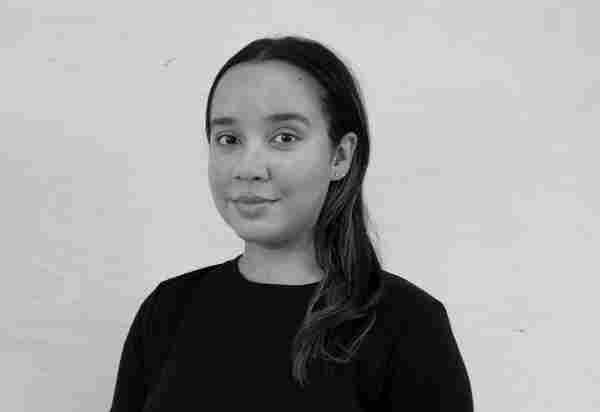
![Darklight Digital - The real cost of working in the arts [if you’re not a nepo-baby] Page Image](https://darklight-digital.com/media/2021/05/jenny-saville-5x5.jpeg)

![Darklight Digital - The real cost of working in the arts [if you’re not a nepo-baby] Page Image](https://darklight-digital.com/media/2024/02/screen-shot-2021-07-08-at-41359-pm-1024x770-1-5x5.png)


![Darklight Digital - The real cost of working in the arts [if you’re not a nepo-baby] Page Image](https://darklight-digital.com/media/2025/06/lowri-cooper-portrait-5x5.jpg)

